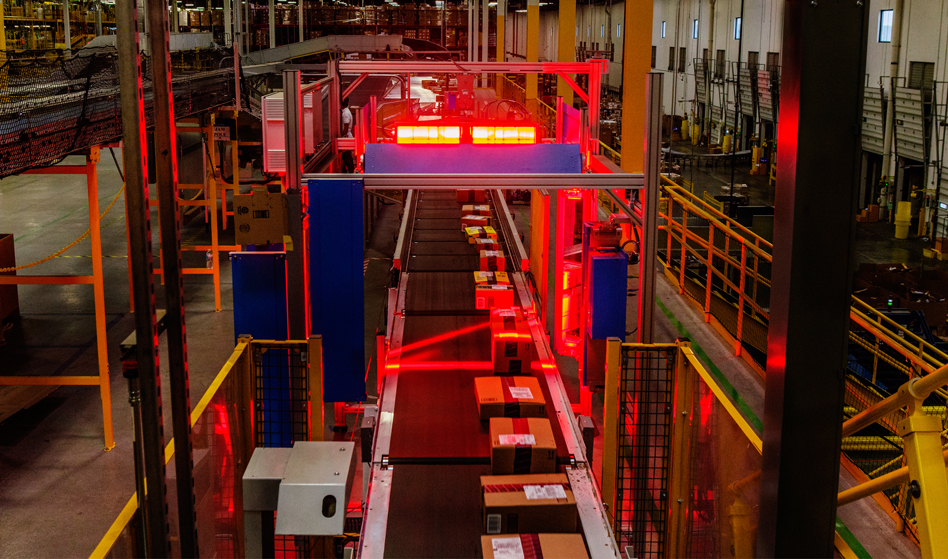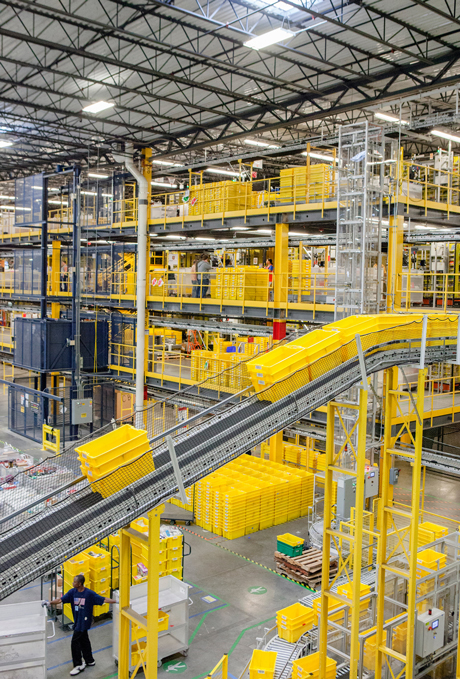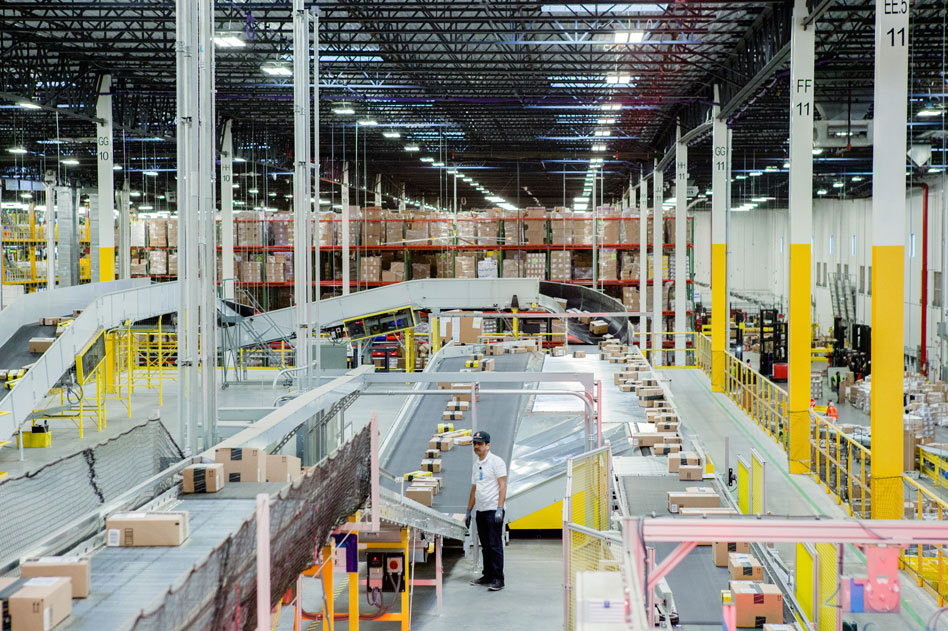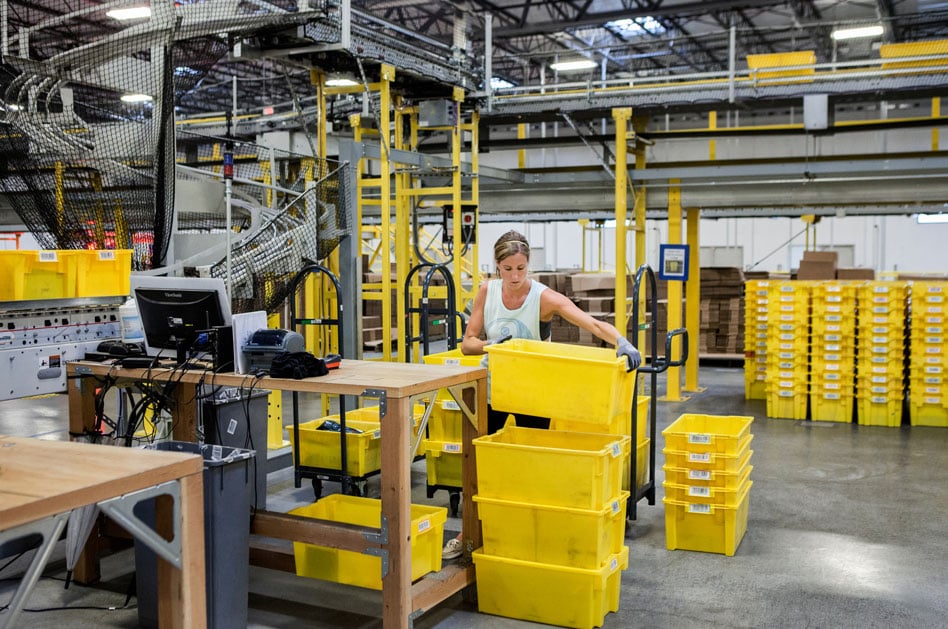Inside Amazon

Some of the secrets behind Amazon’s phenomenal success as an online retailer can be discovered inside a million-square-foot warehouse that sits amid bucolic scenery in the town of Robbinsville, New Jersey. The building is one of Amazon’s most advanced fulfillment centers, and it houses technologies that allow the company to deliver products to customers at amazing speed. Goods are identified, sorted, and packaged with computer-assisted precision, while employees work in tight collaboration with the plant’s automated systems in shifts that run around the clock.

Upon arrival, each new product is identified using a computer vision system that catalogues it rapidly, feeding its weight and dimensions into a central tracking system. At the heart of the building, items stored on tall, square shelves are kept stocked by humans working with a team of 2,000 squat orange robots. The robots zip around the storage area, picking up shelves and either arranging them in neat rows for storage or bringing them over to the human workers, who stack or pick from them. Further along the fulfillment line, workers charged with packing up orders for shipping are automatically given the optimal size of shipping box and even the correct amount of packing tape. Before those boxes are sent to trucks, a system weighs them to make sure the correct products are inside.



One of Amazon’s robots brings a shelf laden with products over to a human picker.


One worker retrieves products from a robotic shelf.

Keep Reading
Most Popular
Large language models can do jaw-dropping things. But nobody knows exactly why.
And that's a problem. Figuring it out is one of the biggest scientific puzzles of our time and a crucial step towards controlling more powerful future models.
How scientists traced a mysterious covid case back to six toilets
When wastewater surveillance turns into a hunt for a single infected individual, the ethics get tricky.
The problem with plug-in hybrids? Their drivers.
Plug-in hybrids are often sold as a transition to EVs, but new data from Europe shows we’re still underestimating the emissions they produce.
Stay connected
Get the latest updates from
MIT Technology Review
Discover special offers, top stories, upcoming events, and more.